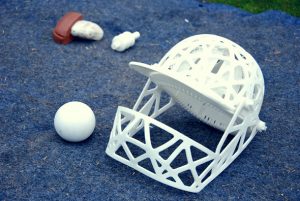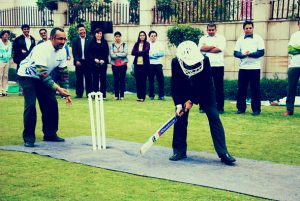The Maker Movement has gained momentum in the automobile, aerospace and interestingly even in the sporting industry. With Adidas running trials on printing sports shoes in their SPEEDFACTORY and Nike following suit, there lies tremendous potential in what can be done in the sports industry. Sporting equipment manufacturers are slowing testing the waters for what could be a game changer in how sporting goods are made. Professional athletes sponsored by manufacturers more often than not customize their equipment based on their body type and performance needs. With the advent of 3-D scanning and printing, these athletes, in collaboration with equipment manufacturers, can easily custom build their goods. In the future for example, Michael Phelps could 3-D scan his body, send it to SPEEDO and they can custom print his swimming suits and googles according to his body type.
One of the games I am really passionate about is Cricket, and its absolutely mind blowing as to how much can be done using 3-D Printing. As Cricket uses a lot of equipment which is often customized to suit the players needs, 3-D printing can be made applicable in the near future by printing custom Helmets, Bails, Gloves and shin pads for the player. At the Materialise Press Conference during the latest edition of the Asia Pacific Conference in India, 3-D Printed Helmets, Bails were displayed and even used in a cricket match. 

Cricket players and enthusiasts could easily have personal 3-D Printers at home to print out helmets, balls and stumps. Instead of running to the nearest sport shop to buy a ball, I can see young children just setting up a print to have a quick game. This could not only engage people to play more sports but also promote the sports popularity within communities who have never experienced or played the game.
The biggest constraint in the 3-D printing of sporting goods is the kind of materials which can be printed. We all know that almost all plastics and some metals can be printed, but what about composites, which are materials made up of a combination of plastics,ceramics or metals. Sporting goods are often made up of complex materials and intricate designs. For example a simple Cricket hand glove uses rubber, some plastics and other fabrics to protect the batters hand against impact, absorb moisture and be flexible. This functionality is hard to achieve using 3-D printing and a lot of research still is under way. One such advancement in 3-D printing of highly functional materials is under the scanner at the University of Bristol, where they have created an innovative way to 3-D print composites. Dr. Richard Trask at the University of Bristol has successfully pioneered a way to 3-D print composite structures using ultrasonic sounds. Here is a video :
As a future Materials Engineer I am excited to see and be part of what can be done in the field of 3-D printing the next generation of innovative and functional materials.

